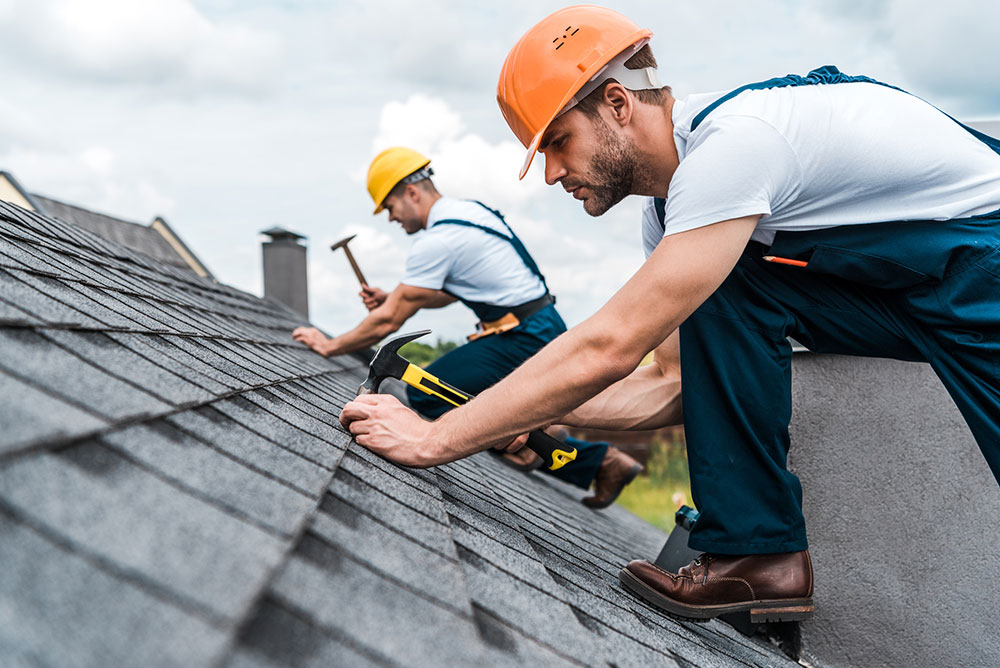The roof is primarily responsible for protecting your home, and it can make your house more aesthetically pleasing. It can account for up to 35% of the exterior in some homes.
With the right installation, the roof can be both durable and appealing to the eyes. It’s essential to keep your home’s curb appeal and keep your property dry by utilizing the best roofing repair services in San Diego, Ca.
Many homeowners may need to replace the roof’s shingles at some point, but they may not be familiar with some parts of the rooftop. If you want to do a major renovation or a minor repair, it’s best if you’re familiar with the components of the roof before starting the entire project. This way, you can be specific with the issues that need fixing when calling the experts from https://gen819roofingsandiego.com, and you can tell them what exactly you wanted to do. Some of the terms that you should know about are the following:
Components of a Roof
Sheathing: Sheathing refers to the sheet materials or boards that are usually attached to the rafters. They cover your property, and they should be installed correctly. Sometimes, the sheathing is also referred to as the deck.
Shingles: Shingles can be made up of slate, asphalt, wooden shakes, metal, flagstone, or fiber cement. Their primary purpose is to ensure the protection of the sheathing that’s often underneath them. Traditionally, the shingles are measured in squares. A hundred square feet is equal to one square of shingle so if you have a roof that’s about 2000 sq. ft., you may need to order around 20 squares of shingles and some extras for them to be enough. Know more about the shingles on this page here.
Underlayment: This is a paper-like and water-resistant material that’s installed over the plywood sheathing to seal it against moisture and water. The underlayment is often used with a vapor barrier and membrane where a plastic sheet will prevent the water from permeating through the materials.
Rafters: This is a metal or wood slat inside the home that supports the entire shingles and sheathing. They are sometimes referred to as the skeleton of your roof.
Flashing: The flashing is a material, or a sheet metal installed on top of the joints of your roofing system. It prevents water damage by sealing some of the points in the joints.
Drainage: This is a feature that’s specially designed for the roof to shed the water automatically. This is measured in pitch or slope, and you should not have standing water because it causes damage to the shingles or underlayment.
What to Know Before a Repair or Replacement Project?
1. Know the Date of the Last Repair Done on the Roof
If you’re the original owner of your home, check when the last time you’ve made arrangements for shingle repairs was. If you notice that you’re spending a lot every month because of several leaks in different areas of the roof, it may be time to consider a major renovation.
You may have an old property that you’ve just bought. If so, check with the owners when was the installation date of the roof was. Some may have warranties, while others may need to be replaced as soon as possible because they can’t hold any longer.
Asphalt shingles may have a lifespan of about 20 years, and slate can last up to a hundred. Learn more about slate roofs here: https://inspectapedia.com/roof/Slate_Roof_Life_Expectancy.php. If you’re unsure whether to replace or repair, you can call an expert to inspect the existing structure, and they’ll provide recommendations on the best course of action that you should take.
2. Ventilation
You need proper ventilation so the materials can have longer lifespans. If there’s an absence of appropriate airflow, everything can be susceptible to mildew and mold. Aside from the primary vents, it would be best if you considered other factors that affect the movement of the air through your roof’s attic. You can check several things on your roof, such as the following:
- There should be a layer that’s free of gaps to protect against heat gain and loss.
- A need for vapor barriers installed under the insulation so the ceilings won’t get any moisture that can rise from the attics.
- Enough vented and open spaces so air can freely pass in and out. In some instances, the pros recommend about 1 foot of space in the vents for every 150 sq. ft. of space in the attic.
- At least an inch of space is located between the sheathing and insulation.
3. The Type of Shingles You Have
Homeowners have a variety of options when it comes to materials. They can choose slate, wood, or asphalt, and each of them can come in different sizes, durability, warranty, and more. Their life spans will depend on the kind of weather you have in your area. The harsh storms, rains, snow, and winds can crack some of the clay shingles, so it’s best if you can consult with the expert roofers first before selecting a material.
How to Choose the Right Contractor
1. Price Is Not the Only Thing that Should Matter
The lifespan of the roof does not only depend on the materials but also their proper applications. The selection of the right roofers is important to prevent leaks and extra expenses in the future. Traditionally, you can ask several contractors to provide estimates and bids for the job. Most of the outcomes show that homeowners select the lowest bid because they can save more.
Whether they are at a federal or state level, government projects are often following the rules of awarding the job to the lowest bidder. Unless there’s a just cause to disqualify a specific bid, the rules are the same, but private property owners should not necessarily follow this theme.
One of the processes’ drawbacks is the inequality of materials and contractors. In reality, the ones offering the lowest price may have made a mistake on their offers, or they plan to jeopardize the job. Contractors need to earn too, and they may try to cut some corners to save money. If you’re the owner of the house, you’ll lose money in the long run by going with the lowest bidders.
Others have best practices of choosing a roofing company in San Diego, CA, for their system, materials, and application procedures. Of course, you can always include the bid of those contractors that offer lower prices to double-check if they did not miss anything in the process.
2. Pre-Qualification Process
Selecting a company based on the costs will need you to do pre-qualifications before the bidding. In San Diego, you may receive more than five applications and bids if you announce a major renovation for your property’s roof. With a pre-qualification, you are making sure that you’re interviewing the professionals who are more likely to complete the project in the fastest time possible and at a reasonable cost.
You can start looking at their websites, portfolios, company, and their overall online presence for ideas on how they work. The best ones will have workmanship, experience, and professionalism, and these factors are reflected in the feedback of their previous clients.
3. The Number of Years they Have Been in Business
You may not probably rely on a mechanic who has a job experience of about three weeks. In the same way, you need a roofing company that has decades of experience in the industry. Some of them may have been working for 20 years, and they have a track record of successful projects. Aside from this, their companies have lasted for so long because of their reliability and trustworthiness.
These are the people that will have the lowest chances of making mistakes during installations. The experienced ones will provide plenty of testimonials and references to call. Avoid becoming a victim to those unscrupulous people who can’t provide a portfolio of their work or reference to their previous clients.
They can be the fly-by-night ones who don’t have a physical office and are known for disappearing in the middle of the job. Some are re-opening months later to target other homeowners. The point is to avoid falling victim to the crooks and do your research really well. Choose the ones with a solid reputation in your community and roofers who are trusted in your neighborhood.
4. Double-Check the License
Working in a high place is dangerous, and it’s never recommended for homeowners to tackle the job themselves. A license is important in these kinds of jobs as it provides you with information that a specific contractor is qualified to work on your project. Without a license, there’s no guarantee that the finished work will be up to the standards of your locality, or they can work at a high ground without any problems.
Roofers without a license may charge less, but they are technically breaking the law when they attempt to work on a construction project. It’s best if they can show you their licenses to ensure that they are following the building codes and regulations and the industry standards when repairing a roof in San Diego.
5. Insurance
Choose roofing companies with insurance so you’ll be protected from liabilities and other costs in the event of accidents. If something bad happens, you don’t have to take the blame and spend on medical bills and lawsuits. Reputable roofers in San Diego will also require their workers to carry insurance with them.
It’s the insurers that will cover the costs of compensation and hospitalization for all the company’s workers. Another thing is to choose companies that don’t hire subcontractors to do the job for them. The roofing company does not usually cover the subcontractors, and as a homeowner, you may be subjecting yourself to a lot of headaches later on. Know more about liability insurance on this site.
6. Certifications
Aside from licenses, certifications for the roofer’s training are also important. Most roofing manufacturers issue certificates to guarantee that the particular company can install their products and materials well. They know the proper techniques to render their services to homeowners.
Certified contractors can prove that they know how to install, repair, and maintain the products that the homeowners have chosen. They provide warranties and guarantees to their work, and they give satisfaction to their customers. The certificates also show that the contractors are continuing their education in learning new skills and working on new materials.


















.jpg)



.jpg)




1 Comments
Awesome and interesting article. Great things you've always shared with us. Thanks. Just continue composing this kind of post. https://www.watertightworthingroofing.co.uk
ReplyDelete